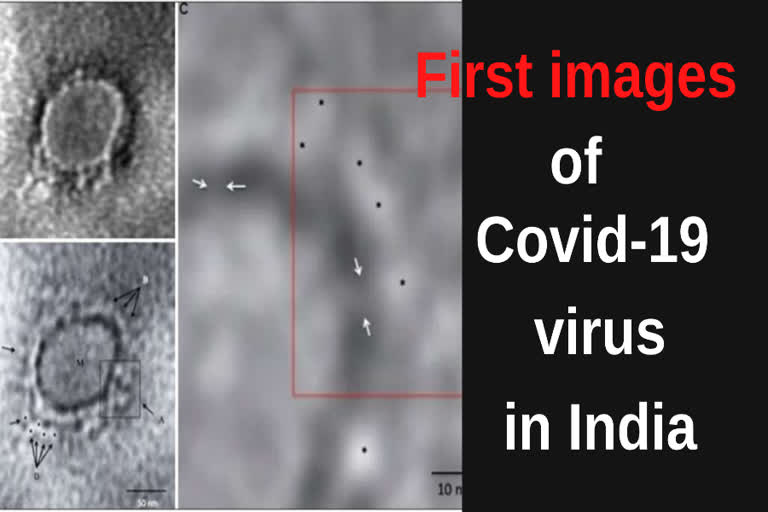The first images from India of what the coronavirus looks like are out. The images of the coronavirus have been caught by a team of ICMR-NIV scientists in Pune.
The images have been captured using the transmission electron microscope imaging. They have been published in the Indian Journal of Medical Research.
The images of Sars-Cov-2, the virus that causes Covid-19, are from the throat swab of the first laboratory confirmed case in India reported on January 30. The woman, among three students studying medicine in Wuhan in China, was diagnosed with Covid-19 after returning to India.
The gene sequencing of the samples from Kerala done at the National Institute of Virology (NIV) in Pune found that the virus was a 99.98 per cent match with the virus in Wuhan.
A total of seven negative-stained virus particles having morphodiagnostic features of a coronavirus-like particle could be imaged in the fields scanned. These included the round shape of the virus and a cobbled surface structure having envelope projections.
The image revealed the presence of stalk-like projections ending in round peplomeric structures typical of a coronavirus particle.
"In summary, to the best of our knowledge, this is the first report from India detecting the SARS-CoV-2 virus using TEM directly in a throat swab specimen confirmed by PCR. Although TEM imaging was limited by particle load in the specimen, we could still detect morphologically identifiable intact particles in stored clinical sample without initial fixation," the study said.
The article titled "Transmission electron microscopy imaging of SARS-CoV-2" has been authored by the ICMR-NIV National Influenza Center Team. The authors include Atanu Basu, deputy director and head of electron microscopy and pathology at NIV Pune.
Also Read:Canadian researchers developing DNA vaccine against COVID-19
According to the article, one particular virus particle was very well preserved, showing features very typical of coronaviruses. This particle was 75 nm in size and showed patchy stain pooling on the surface and a distinct envelope projection ending in round peplomeric (glycoprotein spike on the viral surface). These bind only to certain receptors on the host cell.
According to the study, the description of a novel human coronavirus, initially referred to as the Wuhan coronavirus (CoV), is currently designated as severe acute respiratory syndrome (SARS)-CoV-2 as per the latest International Committee on Taxonomy of Viruses (ICTV) classification. It is probably the most recent human pneumonia virus with high outbreak potential.
Also Read: How to comfort stressed out friends during uncertain times
This novel virus was initially identified through next-generation sequencing (NGS) and was suggested to have a possible zoonotic origin. Till date, detailed morphology and ultrastructure of this virus remains incompletely understood.
Also Read: Now go live on Facebook without phone or an account
(Inputs From IANS)



